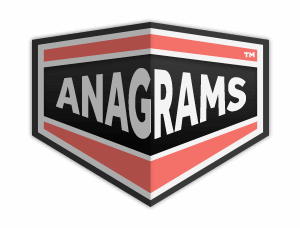What anagrams are available for diadochokinesia?
This page is about an anagram for the word aha sneck oidioid that can be used in word games, puzzles, trivia and other crossword based board games.
aha sneck oidioid
Translation
Find a translation for aha sneck oidioid in other languages:
Select another language:
- - Select -
- 简体中文 (Chinese - Simplified)
- 繁體中文 (Chinese - Traditional)
- Español (Spanish)
- Esperanto (Esperanto)
- 日本語 (Japanese)
- Português (Portuguese)
- Deutsch (German)
- العربية (Arabic)
- Français (French)
- Русский (Russian)
- ಕನ್ನಡ (Kannada)
- 한국어 (Korean)
- עברית (Hebrew)
- Gaeilge (Irish)
- Українська (Ukrainian)
- اردو (Urdu)
- Magyar (Hungarian)
- मानक हिन्दी (Hindi)
- Indonesia (Indonesian)
- Italiano (Italian)
- தமிழ் (Tamil)
- Türkçe (Turkish)
- తెలుగు (Telugu)
- ภาษาไทย (Thai)
- Tiếng Việt (Vietnamese)
- Čeština (Czech)
- Polski (Polish)
- Bahasa Indonesia (Indonesian)
- Românește (Romanian)
- Nederlands (Dutch)
- Ελληνικά (Greek)
- Latinum (Latin)
- Svenska (Swedish)
- Dansk (Danish)
- Suomi (Finnish)
- فارسی (Persian)
- ייִדיש (Yiddish)
- հայերեն (Armenian)
- Norsk (Norwegian)
- English (English)
Definition
What does diadochokinesia mean?
- Diadochokinesia
- Diadochokinesia or diadochokinesis is the ability to make antagonistic movements in quick succession, alternately bringing a limb into opposite positions, as of flexion and extension or of pronation and supination. Speech-language pathology defines it as the speed necessary to stop a determined motor impulse and substitute it with its opposite. The relative timing of this kind of movements is also called alternate motion rates (AMR) or sequential motor rates (SMR).Loss of ability (dysdiadochokinesia) is characteristic of cerebellar diseases. Many clinical tests may be employed to test for such disturbances. Alternating movements: Patient is told e.g. to pronate and supinate their hands in rapid succession, holding forearms vertically. In cerebellar diseases, the movements are irregular and inaccurate; in case of the pyramidal tract lesion the motion may be slowed or incomplete. Stewart-Holmes rebound sign: Patient tries to flex the elbow against applied resistance. When physician's grip is suddenly released, the patient should be able to deter it from rebounding. With cerebellar disease, the forearm may sway in several cycles. The patient may even strike themself if not guarded. Various instrumental techniques can be used to investigate speech motor skills, such as imaging movement transduction and point tracking.
Embed
Citation
Use the citation below to add this anagram to your bibliography:
Style:MLAChicagoAPA
"aha sneck oidioid." Anagrams.net. STANDS4 LLC, 2025. Web. 25 Feb. 2025. <https://www.anagrams.net/term/20371608>.







Discuss this diadochokinesia anagram with the community:
Report Comment
We're doing our best to make sure our content is useful, accurate and safe.
If by any chance you spot an inappropriate comment while navigating through our website please use this form to let us know, and we'll take care of it shortly.
Attachment
You need to be logged in to favorite.
Log In